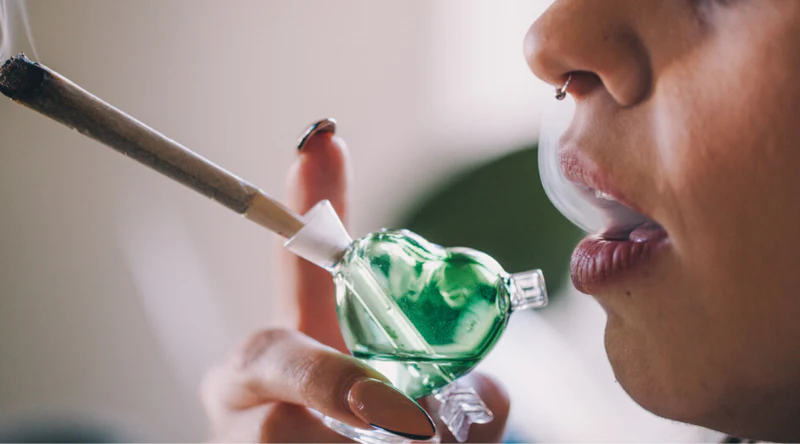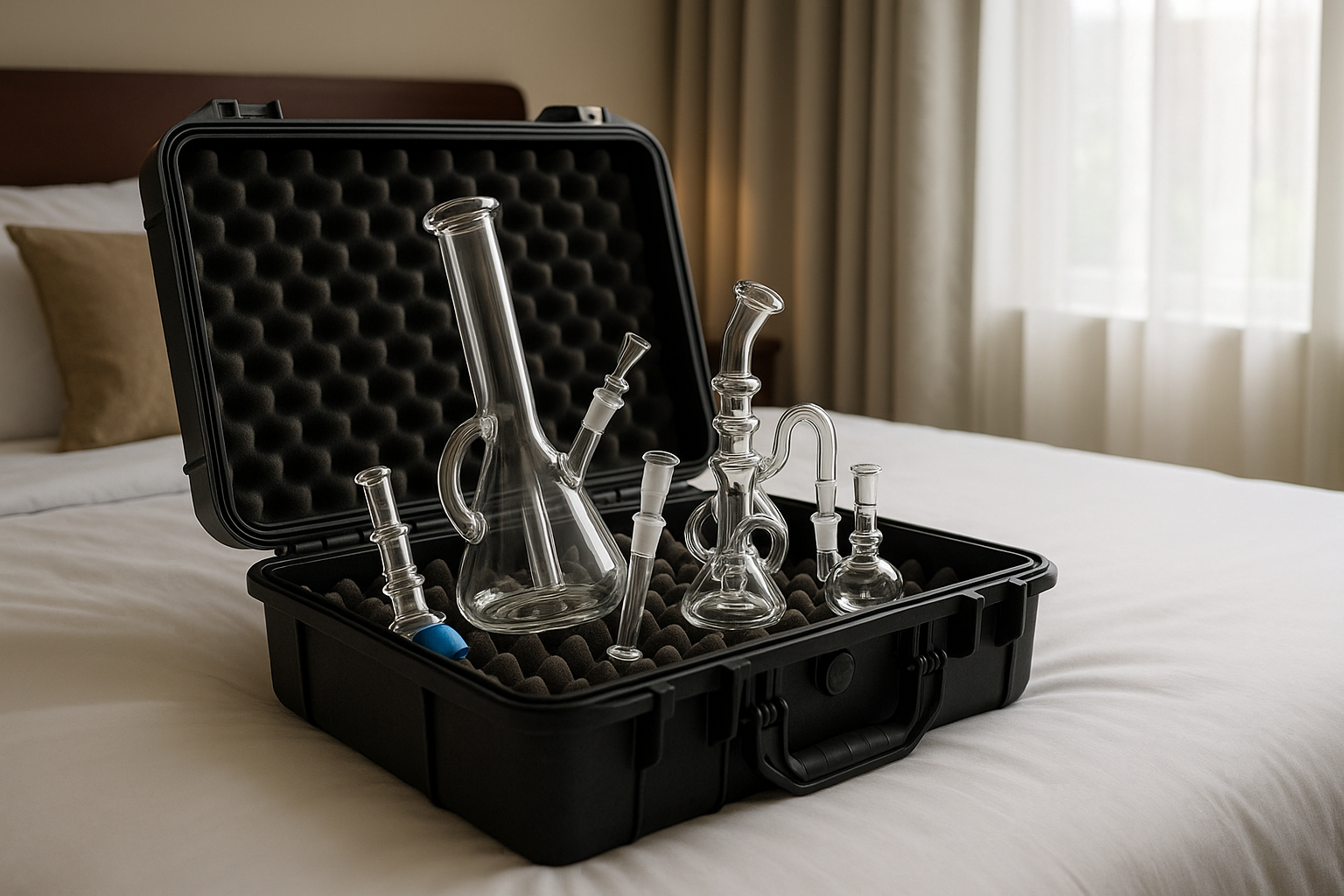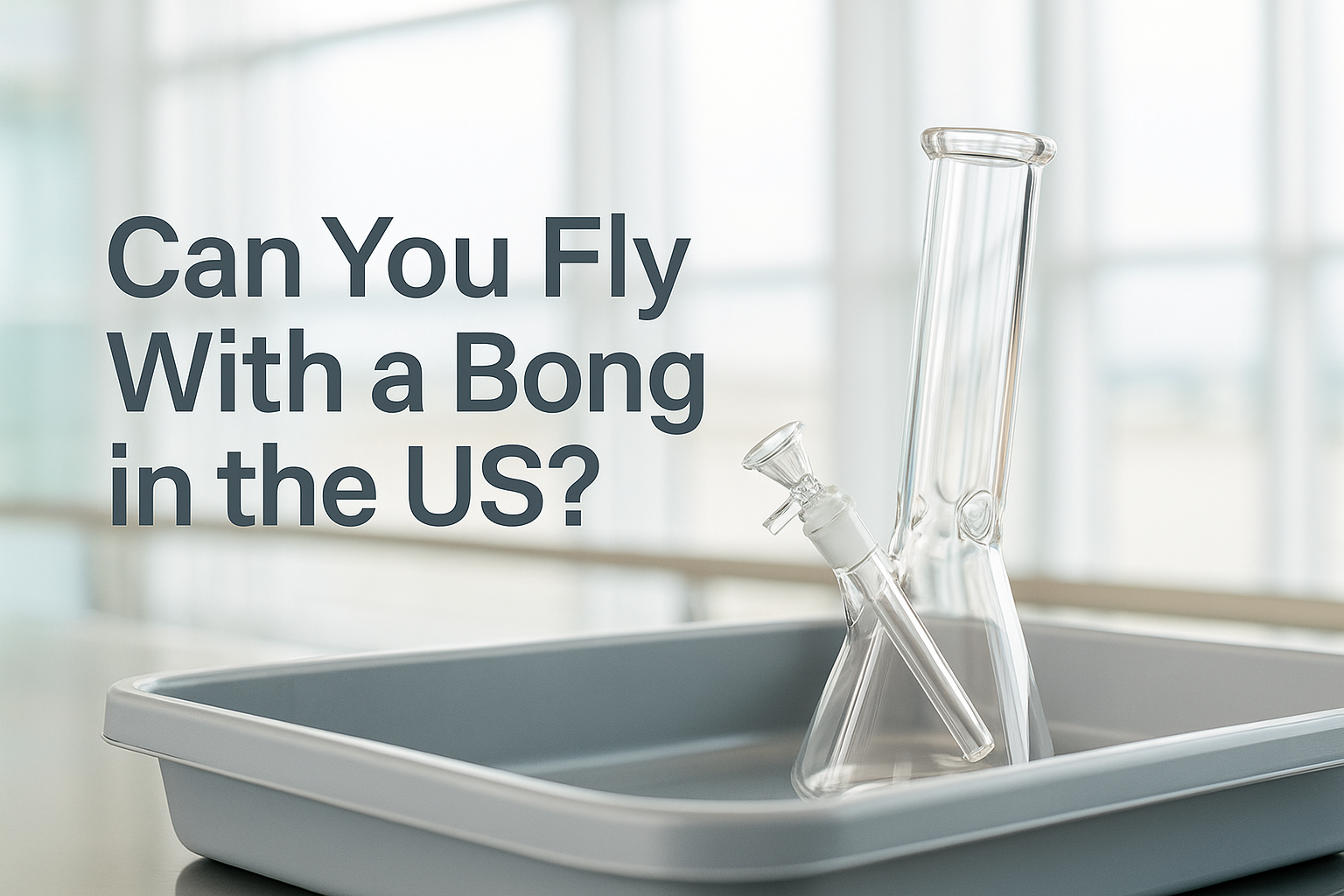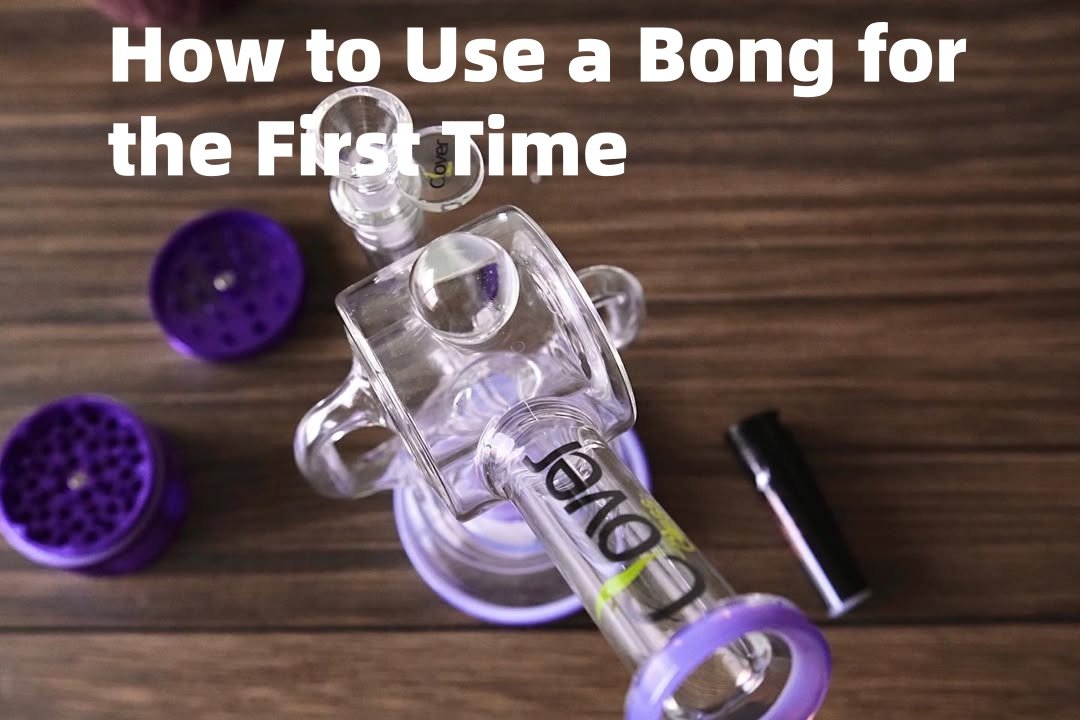I’ve always been curious about what really happens to weed as time goes by. It’s one of those things people often debate: Does it get weaker or lose its punch? Let’s dig in together.
If you’ve ever wondered whether cannabis will lose its potency after a while, the short answer is yes—it can. Most users notice a drop in its ability to deliver the same experience they enjoyed when it was fresh. But there’s a lot more going on behind the scenes. Elements like storage conditions and the plant’s natural aging process all come into play, affecting how strong—or mellow—your weed eventually becomes.
I want to share a down-to-earth look into what causes THC to degrade, how to know if your stash has lost its spark, and whether you should even bother smoking older buds. Let’s get started.
How Long Does Weed Stay Potent After Harvest?
Harvest timing can be tricky, and it’s easy to wonder how long that fresh flower will hold its kick.
I usually tell my friends that, under decent storage, your weed should maintain decent potency for at least a few months.
When stored properly in a cool, dark place away from air and moisture, most cannabis can stay strong for up to a year before showing a noticeable drop in THC. Of course, factors like quality, harvest methods, and curing techniques matter, too.

Dive deeper (How Long Does Weed Stay Potent After Harvest?):
When you first harvest cannabis, the flowers are teeming with cannabinoids like THC (Tetrahydrocannabinol - Wikipedia). If you’ve ever watched a friend sniff fresh buds at a grow facility, you’ve probably seen that excitement over the smell and stickiness. Yet, from the very moment those buds are snipped from the plant, they begin a slow transformation.
Understanding the Curing Process
After harvest, growers typically cure the buds. This process removes excess moisture while preserving flavors, aromas, and chemical components. Proper curing can take anywhere from a couple of weeks to a month. During this stage, careful humidity control can keep mold at bay and help lock in potency.
The Role of Storage
Once cured, the clock starts ticking on the weed’s THC levels. Exposing buds to oxygen, light, or high humidity can speed up THC’s breakdown into CBN (Cannabinol - Wikipedia), a milder compound known for its sedative effects. Keep your stash in an airtight glass jar, away from direct sunlight. Ideally, keep temperatures below 77°F (25°C).
Some folks store weed in plastic bags, but plastic can allow subtle moisture or oxygen exchange, which hastens degradation. If you’re like me and you love to keep your bud’s flavor intact, glass containers or mylar bags are the safer bet.
Quick Note on Extended Storage
If you store weed in a stable environment (around 55-62% relative humidity) and keep the temperature moderate, you can probably stretch potency closer to the one-year mark. But if you notice dryness, a dull color, or a stale aroma, it might be time to replace your stash.
For wholesale or business-related needs, I offer a range of CloverGlass products—like specialized containers and jars—that can help you and your customers maintain the best possible storage environment. After all, nobody wants to open a jar of dusty buds!
What Causes THC to Degrade Over Time?
It’s not just the fact that weed is sitting on your shelf for too long. Plenty of factors play a role.
I find that sunlight, oxygen, humidity, and even handling practices all conspire to break down precious THC.
Key triggers for THC breakdown include direct light, oxygen contact, heat, and improper curing. Keep your cannabis in a well-sealed container, limit exposure to air, and keep temperatures stable.

Dive deeper (What Causes THC to Degrade Over Time?):
Weed doesn’t just “go bad” overnight. It’s more like a slow fade. Here’s a quick look at factors:
| Factor | Effect on THC |
|---|---|
| Sunlight (UV Exposure) | Converts THC to CBN faster, reducing potency |
| Oxygen (Air) | Accelerates oxidation, breaking down cannabinoids |
| Heat | Promotes chemical reactions that degrade THC |
| Moisture or Humidity | Encourages mold growth and can compromise overall quality |
Sunlight and UV Radiation
You might’ve heard that UV rays can degrade just about anything, from paint on a car to color in your curtains. Cannabis is no exception (Light Degradation - Wikipedia). Prolonged exposure to sunlight breaks THC down, morphing it into compounds that simply don’t deliver the same effects.
Oxygen
Oxygen is the double-edged sword of life. We need it to breathe, but exposing weed to too much air encourages oxidation. Oxidation leads to the gradual loss of THC potency, turning it into less psychoactive compounds. Over time, you’ll notice your bud feeling less potent if it’s not sealed properly.
Heat and Humidity
If your storage space feels warm, your bud’s THC breakdown speeds up. Pair that with high humidity and you risk mold growth, which can ruin the entire batch.
Proper Handling Matters
Sometimes, the culprit behind THC degradation is something as simple as frequent opening and closing of containers. The more you expose your stash to room air and fluctuating temperatures, the faster it’ll lose its zing.
My Personal Approach for B2B Clients
In my business, I encourage wholesalers and distributors to store their large cannabis orders in controlled environments—much like how I store and ship my CloverGlass smoking accessories from the Los Angeles warehouse. Consistency in temperature and humidity not only preserves glassware but also extends the life of cannabis products.
Can You Still Smoke Old Weed? What Happens If You Do?
It’s not unusual to stumble upon a forgotten jar of bud in your drawer, buried under t-shirts.
I usually say, yes, you can still smoke old weed, but don’t expect fireworks.
Smoking older cannabis isn’t necessarily dangerous if there’s no mold, but the flavor and potency might be compromised. You might get a more sedative effect or a harsher hit.
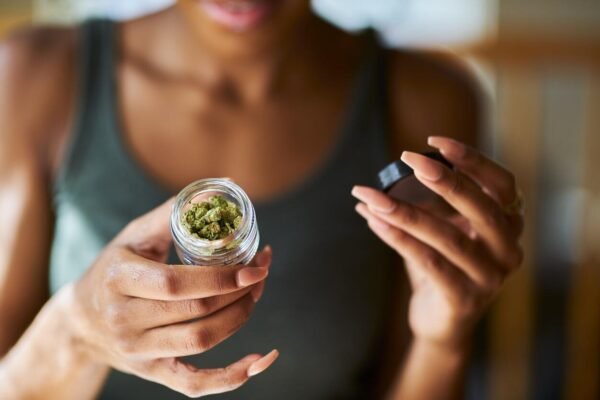
Dive deeper (Can You Still Smoke Old Weed? What Happens If You Do?):
There’s a difference between weed that’s a little past its prime and weed that’s completely spoiled. If your buds are dry but otherwise free of mold, mildew, or odd discoloration, you can probably still smoke them. However, you may notice:
- Reduced Potency: THC content might have dropped significantly, leading to a milder high.
- Off-Flavors and Aromas: Terpenes (Terpene - Wikipedia) can evaporate or degrade over time, so the once fragrant buds might smell bland or even musty.
- Harsh Smoke: Dried-out weed can burn faster, delivering a harsher throat feel.
Safety Concerns
If there’s mold, you may see white fuzz or dark spots that look suspicious. Inhaling mold spores can be harmful. When in doubt, toss it out. Even if it’s not dangerously moldy, weed that’s too old might just not be worth smoking.
Practical Tips for Reviving Buds
Sometimes, people try to rehydrate old weed with humidity packs. These can help restore some moisture, but they won’t magically pump THC back into your flower. Think of it like reheating pizza—it might be okay, but it won’t taste as amazing as when it was fresh.
Why Freshness Matters for Wholesalers
As someone who deals in bulk orders, I know freshness is key for big buyers. No one wants stale buds that underwhelm customers. That’s why we maintain a robust distribution channel, ensuring that our glass bongs, rigs, and related products reach clients quickly from our Los Angeles warehouse, helping them keep their entire inventory—flower included—in top condition.
How to Tell If Your Weed Has Lost Potency
Sometimes, you just know the stash isn’t what it used to be. But how do you make that call with confidence?
Personally, I rely on smell, texture, and taste.
A drop in that sharp, pungent aroma or a crumbly texture might be the first clue. If it smells off or tastes flat, chances are the THC has taken a nosedive.

Dive deeper (How to Tell If Your Weed Has Lost Potency):
Aroma Check
Fresh cannabis has a distinctive scent—whether it’s fruity, piney, or skunky. If you open a jar and barely smell anything, or it smells more like hay than bud, that’s a good sign the terpenes have evaporated. And when terpenes go, THC often follows close behind.
Visual Clues
Check the color of the buds. Vibrant greens, occasional orange hairs, or purple tinges are usually signs of a healthy product. But if it looks dull or brownish, it might indicate that your weed has oxidized. Also, pay attention to trichomes (Trichome - Wikipedia). Those frosty crystals should still be somewhat visible; if they look cloudy or broken, potency might have dropped.
Texture and Feel
Grab a small nug and give it a gentle squeeze. Does it still have some spongy resilience, or does it crumble to dust? Old weed often becomes extremely dry and brittle, losing not just THC but the enjoyable texture that signals a quality product.
Taste Test
When all else fails, a taste test is the final measure. If the flavor is harsh, bitter, or just generally unpleasant, you might be dealing with weed that’s past its prime.
Partnering with the Right Accessories
I’ve found that using premium glass pipes or bongs can actually enhance the taste. Cheap or poorly made smoking gear can accentuate the negative flavors of older weed. With CloverGlass pieces, you’ll get a cleaner, smoother hit—useful even if you’re testing questionable bud.
Best Ways to Store Weed to Preserve THC Levels
Proper storage feels a bit like nurturing a baby seedling—except it’s post-harvest care.
I always keep my buds in airtight glass jars, in a dark cupboard, with a humidity pack if needed.
Maintaining consistent temperature, low light, and proper humidity can go a long way toward locking in potency. If you’re storing large amounts, consider separate jars for different strains to avoid cross-contamination of flavors and smells.

Dive deeper (Best Ways to Store Weed to Preserve THC Levels):
Temperature Control
Ever notice how fresh produce rots faster in a warm kitchen? Your cannabis experiences a similar fate. The sweet spot is around 60-70°F (15-21°C). Anything higher might degrade THC faster, while cooler temps—like a fridge—can sometimes introduce moisture problems if not managed well.
Airtight Containers
I recommend sturdy glass jars with an airtight seal. This method reduces oxygen exposure while keeping your buds from drying out. Plastic baggies let in small amounts of air over time, which quietly chips away at THC levels. Also, glass is inert—meaning it won’t interact with or leach chemicals into your bud.
Humidity Packs
Humidity packs like Boveda or Integra can maintain that ideal range (55-62%) inside your container. Too little moisture, and you’ll get crumbly bud. Too much, and you risk mold. Striking that perfect balance preserves both flavor and potency.
Location, Location, Location
Store your jars in a dark, dry place. Light can degrade THC, so keep them away from sunny windowsills. A back closet or a dedicated cabinet works great. If you must keep them in an area with some light, consider opaque containers.
Long-Term Storage for Businesses
If you’re a wholesaler dealing in bulk cannabis, large sealed containers in a temperature-controlled facility are your best bet. Some businesses even opt for specialized cannabis storage lockers. On my end, at CloverGlass, we ensure that any glassware or accessories we ship to clients also arrives in prime condition. The same principle applies to your weed—shield it from light, air, and heat until it’s ready to sell or consume.
Does Weed Expire? What’s the Shelf Life of Cannabis?
If you’ve ever grabbed a milk carton from the fridge, you know about expiration dates. But weed doesn’t exactly come with a “Best By” stamp.
I see it more as a “window of peak freshness.” After about a year, potency usually declines.
While weed won’t ‘spoil’ like perishable food, it can lose its aroma, flavor, and efficacy over time, especially beyond the 12-month mark.

Dive deeper (Does Weed Expire? What’s the Shelf Life of Cannabis?):
The “Expiration” Dilemma
Cannabis doesn’t turn toxic or become overtly dangerous if stored correctly, even after a year. Instead, it becomes less potent. You might still experience mild effects, but those robust highs and vibrant flavors you once loved start fading away.
Cannabinoid Transformation
THC gradually converts into CBN, a compound known for its calming properties. So instead of a uplifting experience, you might get more of a drowsy, laid-back vibe. For people seeking sedation, this might be a plus. But for those who crave a strong, energetic high, old weed can be disappointing.
Checking Your Stash at a Glance
A quick look and sniff test can tell you whether your weed is still worth it. If it’s dusty, discolored, or has an odd smell, it might be time to let it go. Remember, mold is a no-go. If you see any fuzzy spots, it’s safer to ditch it than to risk a nasty lung infection.
Bulk Storage and Wholesale Concerns
In my experience dealing with B2B customers—wholesalers, distributors, smoke shops, and brand owners—nobody wants to stock outdated product. That’s why I put a premium on fast shipping from our Los Angeles warehouse. I want to ensure folks get fresh CloverGlass accessories and can store their cannabis in top condition. If you run a smoke shop, you already know that stale product hurts your reputation faster than anything else.
Our Value-Add
Even though we don’t deal with selling cannabis itself, we do focus on preserving the smoking experience. From glass dab rigs to silicone pipes, our gear is designed to keep your sessions smooth. It’s all about synergy: great weed and top-notch accessories for your customers.
Conclusion
Weed can indeed lose potency over time, but with the right storage methods—cool temperatures, low light, and airtight containers—you’ll keep your bud strong and tasty for as long as possible. And if you need top-quality glass accessories to enjoy it properly, I’m always here to help.

